THIS COURSE OUTLINE IS COMPLETELY FOR PERSONAL USE. IT WILL PROVIDE NO VALUE AS ALL THE CONTENT IS SPECIFICALLY CATERED TOWARDS ME! I WILL NOT PROVIDE A TEMPLATE. MAKE IT YOURSELF.
Gravity and motion
| Topic | Questions | 1 | 2 | 3 | 4 | 5 | 6 | 7 |
|---|---|---|---|---|---|---|---|---|
| 1 | ||||||||
| 2 | ||||||||
| 3 | ||||||||
| 4 | ||||||||
| 5 | ||||||||
| 6 | ||||||||
| 7 | ||||||||
| 8 | ||||||||
| 9 | ||||||||
| 10 | ||||||||
| 11 |
-
the movement of free-falling bodies in Earth’s gravitational field is predictable
-
the vector nature of the gravitational force can be used to analyse motion on inclined planes by considering the components of the gravitational force (that is, weight) parallel and perpendicular to the plane
-
projectile motion can be analysed quantitatively by treating the horizontal and vertical components of the motion independently. This includes applying the relationships
 Task 1: Investigation of vectors and projectile motion (Validated 2024)
Task 1: Investigation of vectors and projectile motion (Validated 2024) -
when an object experiences a net force of constant magnitude perpendicular to its velocity, it will undergo uniform circular motion, including circular motion on a horizontal plane and around a banked track; and vertical circular motion This includes applying the relationships

-
all objects with mass attract one another with a gravitational force; the magnitude of this force can be calculated using Newton’s Law of Universal Gravitation This includes applying the relationship

-
objects with mass produce a gravitational field in the space that surrounds them; field theory attributes the gravitational force on an object to the presence of a gravitational field This includes applying the relationship

-
when a mass moves or is moved from one point to another in a gravitational field and its potential energy changes, work is done on the mass by the field This includes applying the relationships

-
gravitational field strength is defined as the net force per unit mass at a particular point in the field This includes applying the relationships:
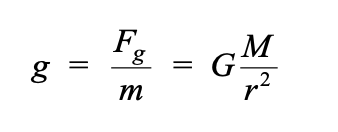
-
Newton’s Law of Universal Gravitation is used to explain Kepler’s laws of planetary motion and to describe the motion of planets and other satellites, modelled as uniform circular motion This includes deriving and applying the relationship
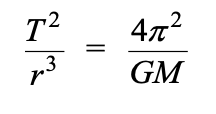
-
when an object experiences a net force at a distance from a pivot and at an angle to the lever arm, it will experience a torque or moment about that point This includes applying the relationship:

-
for a rigid body to be in equilibrium, the sum of the forces and the sum of the moments must be zero This includes applying the relationships

Electromagnetism
- electrostatically charged objects exert a force upon one another; the magnitude of this force can be calculated using Coulomb’s Law
This includes applying the relationship:
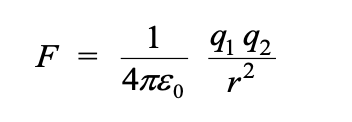
- point charges and charged objects produce an electric field in the space that surrounds them; field theory attributes the electrostatic force on a point charge or charged body to the presence of an electric field
- a positively charged body placed in an electric field will experience a force in the direction of the field; the strength of the electric field is defined as the force per unit charge
This includes applying the relationship
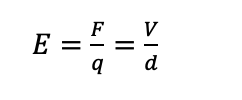
- when a charged body moves or is moved from one point to another in an electric field and its potential energy changes, work is done on the charge by the field
This includes applying the relationship
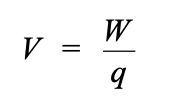
- the direction of conventional current is that in which the flow of positive charges takes place, while the electron flow is in the opposite direction
- current-carrying wires are surrounded by magnetic fields; these fields are utilised in solenoids and electromagnets
- the strength of the magnetic field produced by a current is a measure of the magnetic flux density
This includes applying the relationship
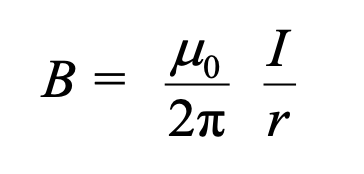
- magnets, magnetic materials, moving charges and current-carrying wires experience a force in a magnetic field when they cut flux lines; this force is utilised in DC electric motors and particle accelerators
This includes applying the relationships:

- the force due to a current in a magnetic field in a DC electric motor produces a torque on the coil in the motor
This includes applying the relationship
 Task 2: Motion and electromagnetism A test
Task 2: Motion and electromagnetism A test - an induced emf is produced by the relative motion of a straight conductor in a magnetic field when the conductor cuts flux lines
This includes applying the relationship

- magnetic flux is defined in terms of magnetic flux density and area
This includes applying the relationship

- a changing magnetic flux induces a potential difference; this process of electromagnetic induction is used in step-up and step-down transformers, DC and AC generators
This includes applying the relationships
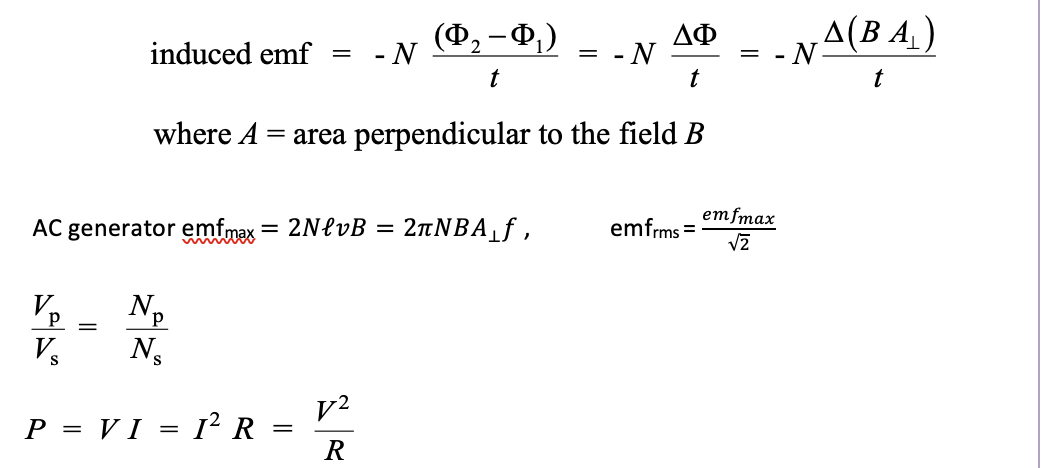 conservation of energy, expressed as Lenz’s Law of electromagnetic induction, is used to determine the direction of induced current
conservation of energy, expressed as Lenz’s Law of electromagnetic induction, is used to determine the direction of induced current
Task 3: Semester 1 Exam (May not include transformers and transmission)
Wave particle duality and the quantum theory
- light exhibits many wave properties; however, it cannot only be modelled as a mechanical wave because it can travel through a vacuum Task 4 Experiment – Laser interferometry
- a wave model explains a wide range of light-related phenomena, including reflection, refraction, dispersion, diffraction and interference, such as in Young’s double-slit experiment. A transverse wave model is required to explain polarisation
- electromagnetic waves are transverse waves made up of mutually perpendicular, oscillating electric and magnetic fields
- oscillating charges produce electromagnetic waves of the same frequency as the oscillation; electromagnetic waves cause charges to oscillate at the frequency of the wave
- atomic phenomena and the interaction of light with matter indicate that states of matter and energy are quantised into discrete values
- on the atomic level, electromagnetic radiation is emitted or absorbed in discrete packets called photons. The energy of a photon is proportional to its frequency. The constant of proportionality, Planck’s constant, can be determined experimentally using the photoelectric effect and the threshold voltage of coloured LEDs
This includes applying the relationships

- a wide range of phenomena, including black body radiation and the photoelectric effect, are explained using the concept of light quanta
- atoms of an element emit and absorb specific wavelengths of light that are unique to that element; this is the basis of spectral analysis
This includes applying the relationships

- the Bohr model of the hydrogen atom integrates light quanta and atomic energy states to explain the specific wavelengths in the hydrogen spectrum and in the spectra of other simple atoms; the Bohr model enables line spectra to be correlated with atomic energy-level diagrams and explains the phenomenon of fluorescence and phosphorescence
- on the atomic level, energy and matter exhibit the characteristics of both waves and particles. Young’s double slit experiment is explained with a wave model but produces the same interference and diffraction patterns when one photon at a time or one electron at a time are passed through the slits
This includes applying the relationship:
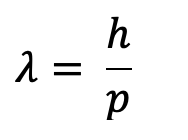 Task 5: Evaluation and analysis – Particle nature of light
Task 6: Wave particle duality, quantum theory test
Task 5: Evaluation and analysis – Particle nature of light
Task 6: Wave particle duality, quantum theory test
Special relativity
- observations of objects travelling at very high speeds cannot be explained by Newtonian physics. These include the dilated half-life of high-speed muons created in the upper atmosphere, and the momentum of high-speed particles in particle accelerators
- Einstein’s special theory of relativity predicts significantly different results to those of Newtonian physics for velocities approaching the speed of light
- the special theory of relativity is based on two postulates: that the speed of light in a vacuum is an absolute constant, and that all inertial reference frames are equivalent
- motion can only be measured relative to an observer; length and time are relative quantities that depend on the observer’s frame of reference
This includes applying the relationships
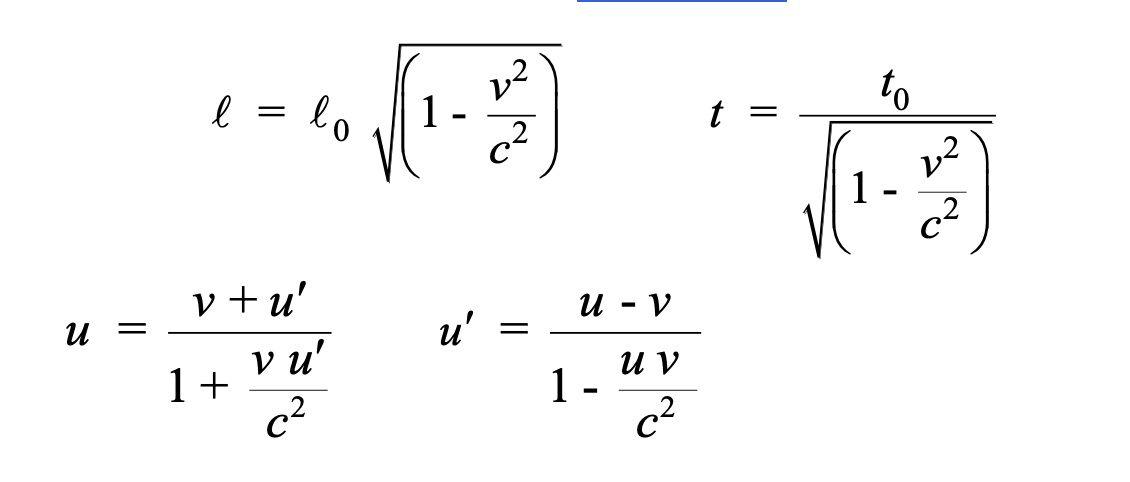
- relativistic momentum increases at high relative speed and prevents an object from reaching the speed of light
This includes applying the relationship
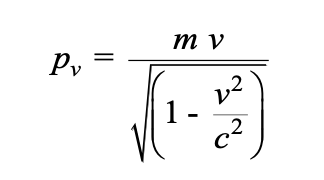
- the concept of mass-energy equivalence emerged from the special theory of relativity and explains the source of the energy produced in nuclear reactions
This includes applying the relationship
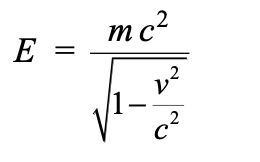
- The total energy of a moving object is the sum of the energy due to its mass at rest and kinetic energy
This includes applying the relationships:

The Standard Model
- the Big Bang theory explains the expansion of space, which is measured by redshift and is supported by Hubble’s law
This includes applying the relationship:
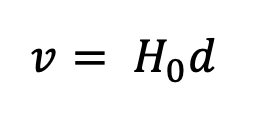
- the Standard Model is used to describe the evolution of forces and the creation of matter in the Big Bang theory
- high-energy particle accelerators use electric and magnetic fields to accelerate particles
This includes deriving, understanding and applying the relationship:
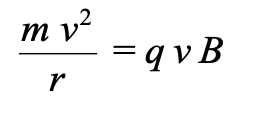
- mass-energy equivalence and the motion of high energy particles in accelerators can be used to test theories of particle physics, including the Standard Model
- baryons and mesons are hadrons, which are composite particles made up of quarks
- the Standard Model is based on the premise that all matter in the universe is made up from elementary matter particles called quarks and leptons and their corresponding antiparticles. Fundamental particles interact via the four fundamental forces
- the Standard Model explains three of the four fundamental forces (strong, weak and electromagnetic forces) in terms of an exchange of force-carrying particles called gauge bosons; each force is mediated by a different type of gauge boson
- lepton number, baryon number and electric charge are quantities that are conserved in all interactions between particles; these conservation laws can be used to support or invalidate proposed reactions Task 7: Special relativity, the Standard Model test Task 8: Semester 2 Examination